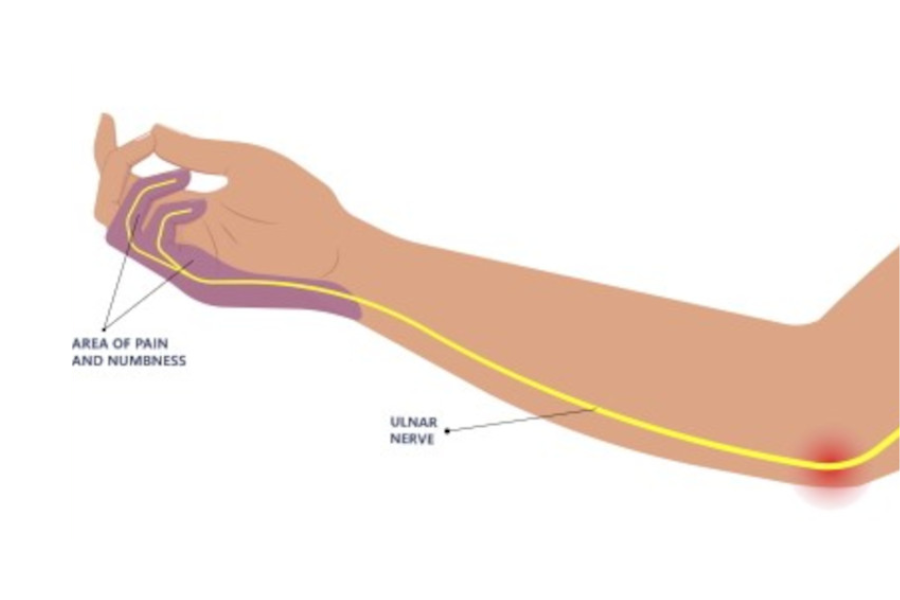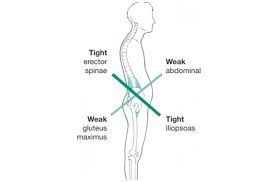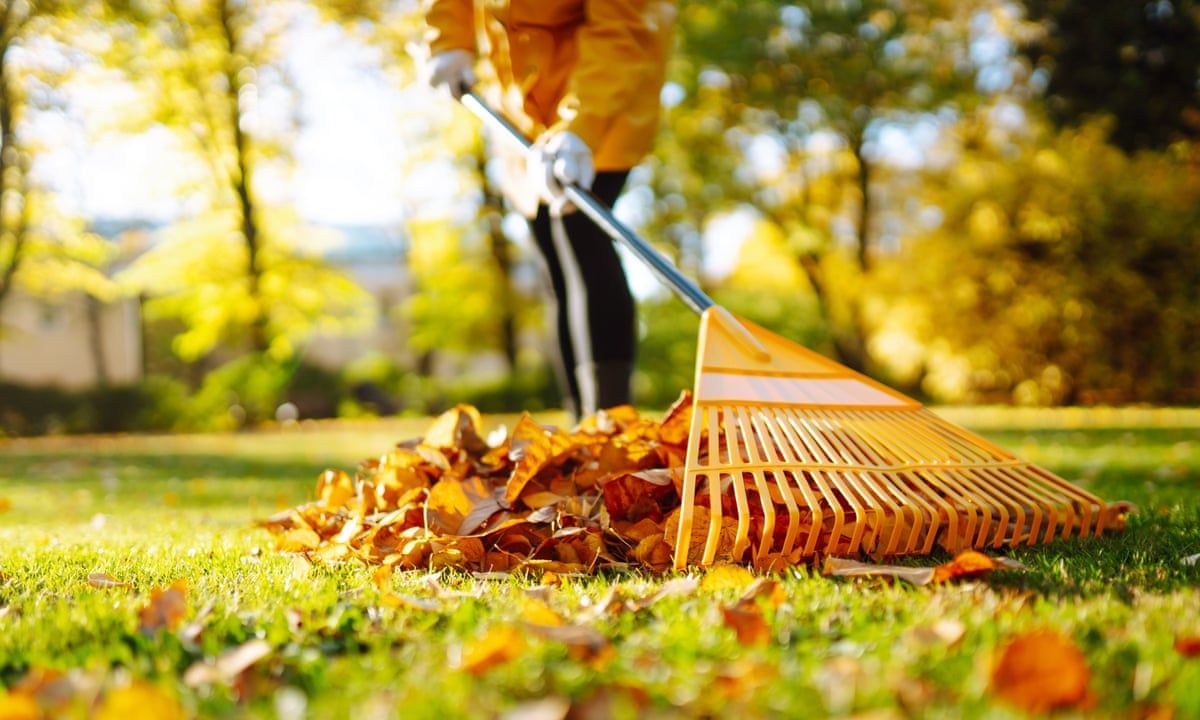Cubital Tunnel Syndrome: When Your Funny Bone Isn’t So Funny

We’ve all hit our “funny bone” before — that zinger of tingling pain shooting down your arm that you shake out. But when that sensation starts happening without bumping your elbow, it might not be so funny anymore. You could be dealing with something called Cubital Tunnel Syndrome — a condition that gives your ulnar nerve a bit too much attention for comfort.
Let’s break down what’s going on inside that elbow of yours, what causes this pesky problem, how to treat it, and what you can do to keep your funny bone feeling more “fun” than “numb.”
What Is Cubital Tunnel Syndrome?
Cubital Tunnel Syndrome happens when your ulnar nerve — one of the main nerves in your arm — gets compressed or irritated as it passes through the inside of your elbow. The ulnar nerve runs from your neck, down your arm, and through a narrow space at the elbow called the cubital tunnel (right behind that bony bump on the inside of your elbow).
When this nerve gets pinched or stretched, it can cause:
- Tingling or numbness in your ring and pinky fingers
- Weakness in your hand or grip strength
- Aching pain on the inside of the elbow
- That classic “electric shock” feeling down your arm
Think of it like this: your ulnar nerve is the body’s internal phone line for pinky communication — and Cubital Tunnel Syndrome is like a bad connection that keeps dropping your calls.
What Causes It?
This nerve irritation can come from a mix of everyday habits, repetitive motions, or even just how you sleep. Some common culprits include:
1. Elbow Bending (A Lot)
Keeping your elbow bent for long periods — like when holding your phone, typing at your desk, or sleeping with your arm tucked under your head — can stretch and compress the ulnar nerve.
2. Leaning on Your Elbows
That classic “leaning on your desk while scrolling your phone” position? Not your elbow’s best friend. Constant pressure on the inside of the elbow can irritate the nerve over time.
3. Direct Trauma
If you’ve ever smacked your elbow just right on a table corner, you know how sensitive that nerve is. Repeated bumps or injuries can cause inflammation that narrows the cubital tunnel.
4. Anatomical or Structural Factors
Some people are simply built with a tighter cubital tunnel or have extra tissue that can put pressure on the nerve. Arthritis, bone spurs, or swelling from an old injury can also contribute.
5. Repetitive Activities
Jobs or hobbies that involve repetitive elbow flexion (like mechanics, musicians, or athletes who throw or lift frequently) increase your risk. Even frequent desk workers can experience it thanks to hours of typing with bent elbows.
💡 Did You Know?
- Cubital Tunnel Syndrome is the second most common nerve entrapment in the body after carpal tunnel syndrome.
- The ulnar nerve controls some of the smallest muscles in your hand — including the ones that help you spread your fingers apart.
- The reason it’s called the “funny bone” isn’t because it’s amusing — it’s because the ulnar nerve runs along the humerus bone (get it?).
How It’s Diagnosed
If you start noticing tingling, weakness, or pain around your elbow or hand that doesn’t go away, it’s time to talk to a healthcare professional. A chiropractor or physical therapist might perform tests like:
- Tinel’s sign: gently tapping over the ulnar nerve to see if it triggers symptoms
- Elbow flexion test: holding your arm bent to see if numbness develops
- Nerve conduction studies or EMG: to measure how well your nerve is functioning
Getting a proper diagnosis is key since other conditions (like carpal tunnel syndrome) can cause similar symptoms but affect different nerves.
Treatment Options
The good news? Most cases of Cubital Tunnel Syndrome can be treated without surgery. Early intervention often leads to full recovery and gets you back to your normal activities faster.
1. Rest and Activity Changes
First step: give your elbow a break. Avoid keeping it bent for long periods and stop leaning on it. Small changes — like switching your phone hand or adjusting your work setup — can make a big difference.
2. Bracing or Splinting
Wearing a light brace or splint, especially at night, can help keep your elbow straight and prevent you from bending it while you sleep. This allows the nerve to calm down and heal.
3. Nerve Glides and Stretching
Gentle nerve glide exercises help the ulnar nerve move smoothly through its pathway, reducing irritation and improving flexibility. Your chiropractor or physical therapist can teach you specific stretches that safely mobilize the nerve.
4. Chiropractic and Soft Tissue Therapy
Chiropractic adjustments can help improve joint motion and reduce muscle tension that might be compressing the nerve. Soft tissue techniques, like myofascial release or instrument-assisted therapy, can also relieve tightness around the elbow and forearm.
5. Massage Therapy
Massage can improve blood flow, reduce inflammation, and ease muscle tightness around the cubital tunnel — all of which help take pressure off the nerve.
6. Ergonomic Adjustments
Simple changes to your workspace can prevent aggravating your elbow. Lower your keyboard, keep your elbows at your sides, and use a chair with good arm support.
7. Surgery (In Severe Cases)
If conservative care doesn’t help after several months, or if you experience muscle wasting or severe weakness, your provider might refer you for surgery. Surgical options usually involve decompressing or repositioning the nerve to prevent further damage.
How to Prevent Cubital Tunnel Syndrome
A little prevention goes a long way — especially if you’re at a desk all day, play sports, or just tend to bend your elbows a lot. Here are some easy ways to protect your ulnar nerve:
- Watch Your Posture: Keep your elbows close to your body and avoid resting them on hard surfaces for long periods.
- Change Positions Frequently: Switch up your position every 20–30 minutes and stretch it out.
- Use Headsets for Long Calls: Skip the elbow crimp and go hands-free.
- Sleep Smart: Avoid sleeping with your elbows bent or tucked under your pillow.
- Strengthen Supporting Muscles: A strong upper body keeps stress off the nerve.
- Stretch It Out: Add gentle forearm and wrist stretches to your day.
When to See a Professional
If you notice persistent tingling in your ring or pinky fingers, weakness in your hand, or elbow pain that doesn’t improve, it’s time to get checked out. Early intervention can prevent long-term nerve damage and get you back to feeling normal faster.
At Peak Performance, our chiropractors and massage therapists work together to pinpoint the source of your symptoms and develop a care plan that helps reduce pain, restore motion, and prevent recurrence. From nerve glide education to soft tissue therapy, we’re here to keep your elbows — and your funny bone — in great shape.
The Bottom Line
Cubital Tunnel Syndrome might sound like a fancy term, but it really boils down to this: your ulnar nerve just needs a little more space and care. With some mindful movement, posture tweaks, and the right treatment plan, you can keep that nerve happy and your arm functioning at its best.
Because while laughter might be the best medicine — your funny bone still deserves a break now and then.
Bethany Wolcott
D’Youville Chiropractic ‘26












